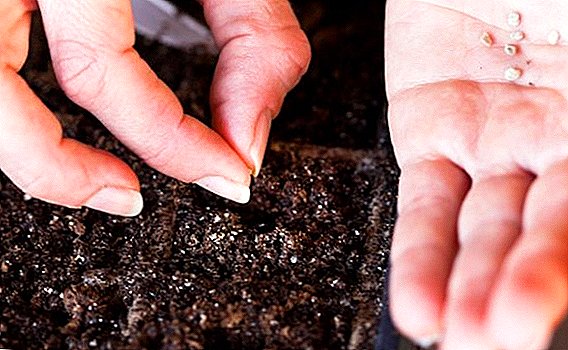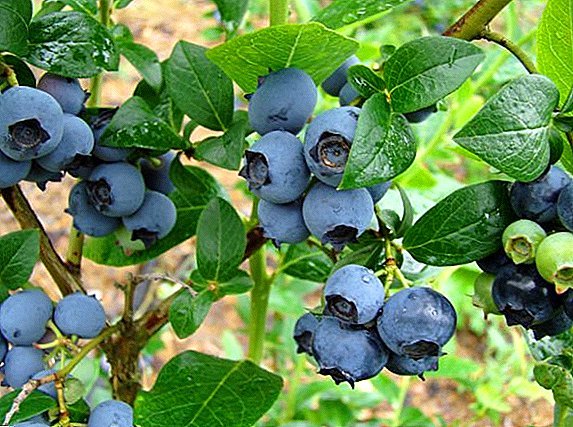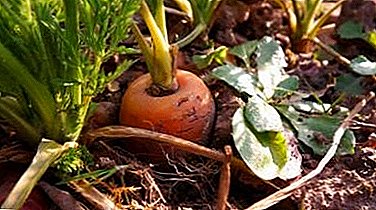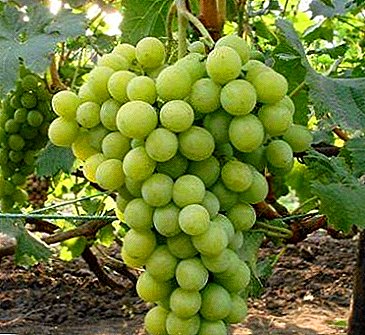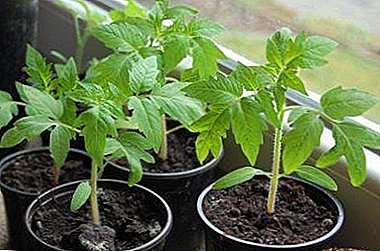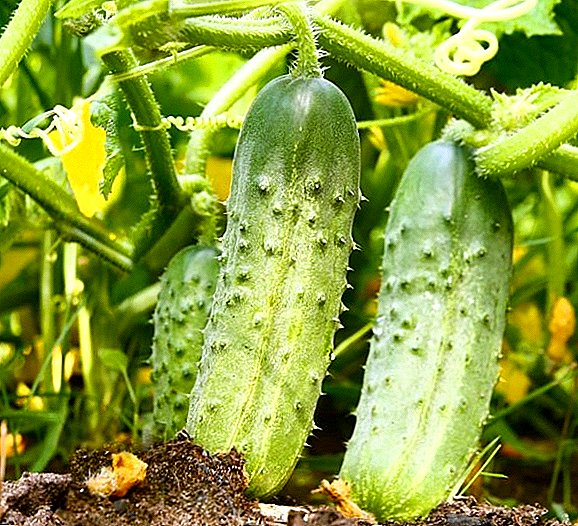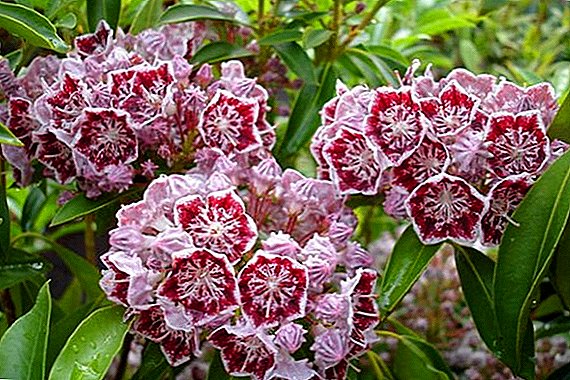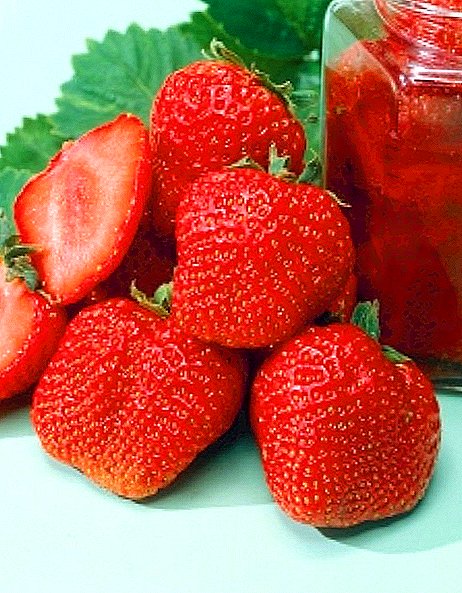
Professional gardeners each year strive to diversify their plants, which "live" on their plots. Therefore, these people are constantly looking for newer varieties of various crops that would be able to give a very good harvest, and, moreover, excellent fruits.
As for strawberries, the most worthy representative of this berry is the variety "Gigantella". He has long been "settled down" in our land, and for him not our obstacle is not quite a tropical climate.
But nevertheless, gardeners secrete a couple of flower beds for this berry, and from this small part of the site they manage to fill the berries for the winter with a short period of fruiting of “Gigantella”.
How is it possible to grow a lot of berries in a small area? Yes, very simple, because "Gigantella" - a very unusual variety.
All the "highlights" of this class are described below.
Strawberry "Gigantella" is the result of the work of Dutch breeders. This variety got its name due to the impressive size of the very first berries - they can gain about 100 grams in weight.
Plants of this variety are very powerful and can grow to 0.35 - 0.5 m in height and 0.5 m in diameter, despite the fact that it is a bush.
But still, they are located quite compactly, which allows you to drip seedlings thickly. In addition, this strawberry grows quickly enough, and also forms a lot of whiskers, which need to be removed in the process of leaving. The foliage on the bushes are light green, with a rough surface. Peduncles strong, thick.

In terms of ripening, "Gigantella" is a medium-late strawberry, it enters fruiting in the first half of July.
The berries from the first harvest are the largest (up to 100 g), later berries gain in weight about 50 - 60 g. The fruits themselves are very beautiful, scarlet in color, with strawberry-like shape and well-protruding seeds.
The taste of this strawberry is excellent, moderately sweet, with spicy sourness and hints of pineapple. The flesh is both juicy and hard enough, which makes it possible to store these berries for a long time and transport them.
These berries can be safely frozen for the winter, and the taste and appearance will not change. The yield is quite high, the yield from one bush is about 3 kg of ripe berries.
Gigantella has no disadvantages, although for some people the taste of these berries may seem inappropriate. One of the advantages of this variety is its frost resistance, but the bushes still need shelter for the winter, since strawberries are quite a capricious plant.
About the features of planting varieties

A place for strawberry bushes should be sunny and lie on the south-west side, with a slight slope of the site. Place under the bed should not be located in the lowlands, as well as in the area with high humidity.
The depth of groundwater should be at least 0.8 - 1 m. Preparation of the soil for planting strawberries is normal, that is, it must be re-excavated, leveled with a rake, and also fertilized.
Dripping seedlings can be 2 times a year - in early fall or in early spring. The main thing is that the temperature of the earth does not fall below 15 ° C, otherwise the seedlings will not take root.
Seedlings can be both purchased and grown personally. Growing strawberry seedlings will not be a major task for you if you have ever dealt with growing seedlings.
It is important to create favorable environmental conditions, namely, a sufficient amount of moisture, high temperature (+ 20 + 25 ° C), as well as a lot of light (special lamps can be used). Seedlings should appear 20-25 days after sowing the seeds.

This seedling need to diveso that the seedlings have a well developed root system.
When placing the seedlings at a distance of 5 cm from each other, all plants will be very comfortable. A healthy planting seedling should have 5–6 true leaves, as well as uriciform roots, which should be cut to a length of 6–7 cm before planting.
In case of high temperature and low humidity, it will be necessary to leave 1 - 2 sheets in order to reduce the area of evaporation of moisture.
Dripping seedlings should be at a distance of 15 - 20 cm from each other, and the interval between adjacent rows of bushes should be at least 70 cm. The best time to transplant the bushes into the ground is cloudy weather, but by no means a bright sun.
Water young plants will need to be immediately, and abundantly, consuming 0.5 - 0.6 liters of water per bush. Mulching between rows should be followed after watering. After 10-15 days it is necessary to check whether all the seedlings have taken root. If some are dead, then they will need to be removed, prikopav after this new bushes.
It is also interesting to read the rules of planting strawberries.
Rules for the care of "Gigantella"

"Gigantella" is a very demanding variety in care, therefore it is necessary to take care of these plants constantly.
In general, strawberry culture is very much in need of irrigation, since groundwater will not be able to provide the bushes with enough moisture. If the humidity in the spring is low, then the start of irrigation should coincide with the end of April. three waterings throughout May, June and July are enough to make the bushes feel excellent.
It will be enough 10 - 12 liters of water per square meter. m. beds. When the bushes begin to bloom, this indicates the beginning of the most active phase of the vegetative development of the bushes. It is at this time that strawberries need the most moisture.
Therefore, we must be very careful monitor soil moisture. At this time, the amount of water needed to increase to 20 - 25 liters per square meter. The water itself should not be cold, because such watering just hurts the leaves and roots of the bushes.
Mulching soil on a strawberry bed plays an important role. Since the fruits of the "Gigantella" are very large, under their own weight they fall to the ground, which allows various parasites or the fungus to "settle" on the fruits.

Therefore, the ground around the beds should be covered with a layer of straw, which will protect the strawberries from weeds or the development of rot.
For the first time mulch should be used in early spring, after the opening of the bushes. You need to repeat this procedure at the time when the fruits themselves are tied. At the same time, sawdust or conifer needles will be suitable as the necessary material, with which the bed should be filled, but not the bushes and leaves themselves.
Feed strawberries play a very important role in the process of its cultivation, and especially in conditions of low fertility soils. In early spring you need to make a full range of fertilizers.
When the buds begin to form, and after - the fruits, the plants really need potassium, so you need to make potassium salt. To increase the yield does not interfere with the processing of bushes with a solution of boric acid. After the crop is harvested, it is necessary to fertilize the soil with all fertilizers so that the plants do not feel hunger during the winter period.
Now you can make a fair conclusion that strawberries varieties "Gigantella" will be a great addition to any site. Therefore, having planted several bushes of this variety, you will not only be satisfied with the harvest, but also select a couple of square meters for new bushes. Successes.


